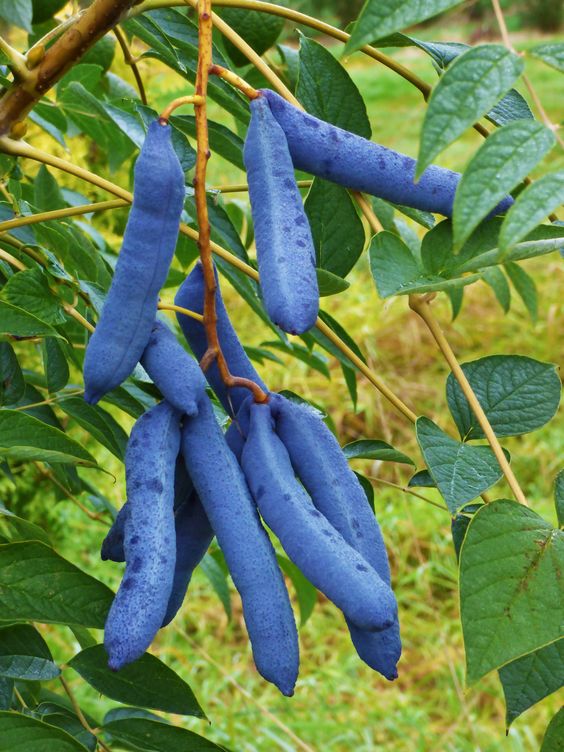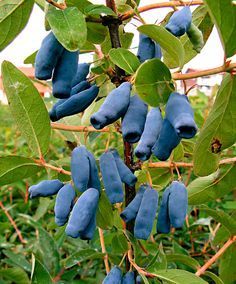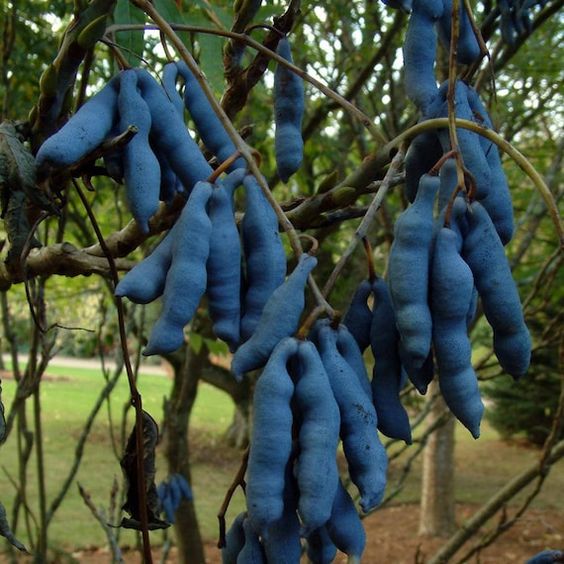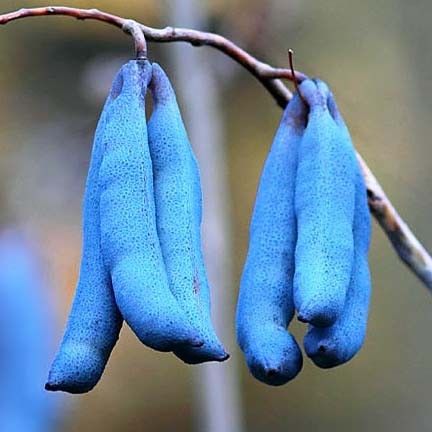
Decaisnea fargesii, commonly known as “Blue Sausage Fruit” or “Dead Man’s Fingers,” is a deciduous shrub or small tree that belongs to the family Lardizabalaceae. It’s native to the cool temperate forests of China and the Himalayas. Here are some key characteristics and information about this intriguing plant:

1. **Appearance:** Decaisnea fargesii is known for its unique appearance. It has pinnately compound leaves with 7 to 17 leaflets. The most distinctive feature is its fruit pods, which are large and elongated, resembling sausages or fingers. These pods can grow up to 8-10 inches (20-25 cm) long and are bluish-green in color.
2. **Fruit:** The blue sausage-like fruits are the highlight of this plant. They contain large, shiny seeds that are embedded in a gelatinous pulp. The pulp has a sweet and somewhat cucumber-like flavor. The fruits are edible but are often an acquired taste due to their unusual texture and taste.

3. **Cultivation:** Decaisnea fargesii is often grown as an ornamental plant in gardens and parks due to its intriguing appearance. It prefers partial shade to full shade and well-draining soil. It’s generally a low-maintenance plant and can tolerate colder climates.
4. **Landscape Use:** This plant can be used as a focal point in shady areas of gardens. The unique fruits can be conversation starters and add a touch of curiosity to the landscape.

5. **Edible Uses:** While the fruit is edible, it’s not widely consumed due to its strong taste and somewhat slimy texture. In some regions, the fruit pulp is used to make jams, jellies, or even beverages.
6. **Cultural Significance:** In some regions where Decaisnea fargesii is native, the plant and its fruits have cultural and medicinal significance. The seeds are sometimes used in traditional medicine.

7. **Wildlife:** The fruit pods can also attract birds and wildlife, adding ecological value to the landscape.

8. **Growing Conditions:** This plant thrives in cool, temperate climates and is not well-suited to hot and humid conditions. It prefers moist, well-draining soil.




